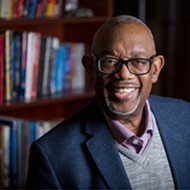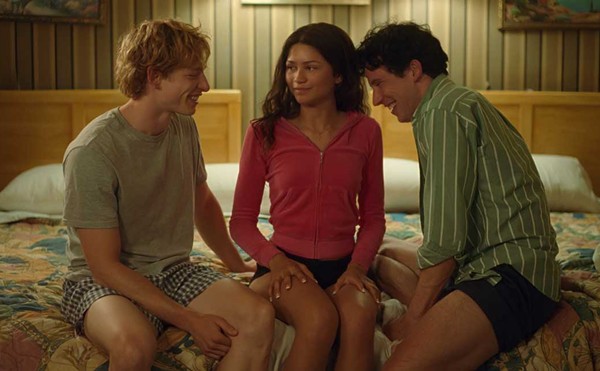All he was saying was, "Give peace a chance." But John Lennon couldn't have picked a worse time, place or climate in which to say it.
Lennon's maturation from mop-topped pop icon to impassioned anti-war activist was ignited by America's involvement in the bloodiest and most unpopular armed conflict of the 20th century, the Vietnam War. It was bad enough that young people throughout the nation were rallying and protesting in those turbulent times; to have this Brit megastar, this limey pied piper, using his celebrity to galvanize public opinion here and make that singsong piece of drivel a new national anthem? Well, especially considering the ultra-paranoid era of the Nixon administration, Lennon would have to go.
In the new documentary The U.S. vs. John Lennon, writer-directors David Leaf and John Scheinfeld create a focused and seamless time capsule of the period from roughly 1966 to 1976 when the Nixon White House — convinced that one man could sway a youthful new voter demographic and change the outcome of the 1972 election — set J. Edgar Hoover and the power of the U.S. government on a mission to quash a Beatle. As former FBI agent Wesley Swearingen says, "the problem was not with his music, but with his friends."
The film begins with, and uses as a focal point, the "Free John Sinclair Now" rally in Ann Arbor of Dec. 10, 1971, where Lennon and his wife, Yoko Ono, headlined the bill and unveiled the song "John Sinclair," lamenting that the local poet-promoter "got 10 for two" (10 years, two joints). Lennon and Yoko were encouraged to participate in the rally by two newfound acquaintances, radical Yippie co-founders Abbie Hoffman and Jerry Rubin, marking the unofficial start of Lennon's post-Beatle activism. Later, we're treated to the bizarre sight of Lennon interviewing Black Panther Party co-founder Bobby Seale on the old whitebread Mike Douglas Show.
Because Yoko gave her full cooperation to the movie, there are trade-offs here. Parts of Lennon's life — like his first marriage and the period in 1973 when he and Yoko were "on a break" from each other — are not mentioned. On the other hand, the film is filled with rare personal footage, much of which depicts John and Yoko's love with new depth and understanding.
The filmmakers are impressively thorough in their interview quest. Though no surviving Beatle agreed to take part, not every movie can boast Seale and Angela Davis commenting on the same topics with G. Gordon Liddy and John Dean. George McGovern (who should have been discouraged from singing "Give Peace a Chance" on camera), Gore Vidal, Tom Smothers and, of course, Yoko also are featured prominently.
Tellingly, when Nixon won the 1972 presidential election in a landslide, the White House appeared to lose interest in deporting Lennon over an old UK drug charge. Asked by a reporter during this prolonged legal battle why the immigration service was singling him out, Lennon replied with his typically dry wit, "I've got one of those faces, you know? People just hate me face." He knew better. And now, so do we.
Showing at the Main Art Theatre (118 N. Main St., Royal Oak; 248-263-2111).,
Jim McFarlin writes about movies for Metro Times.. Send comments to [email protected].






